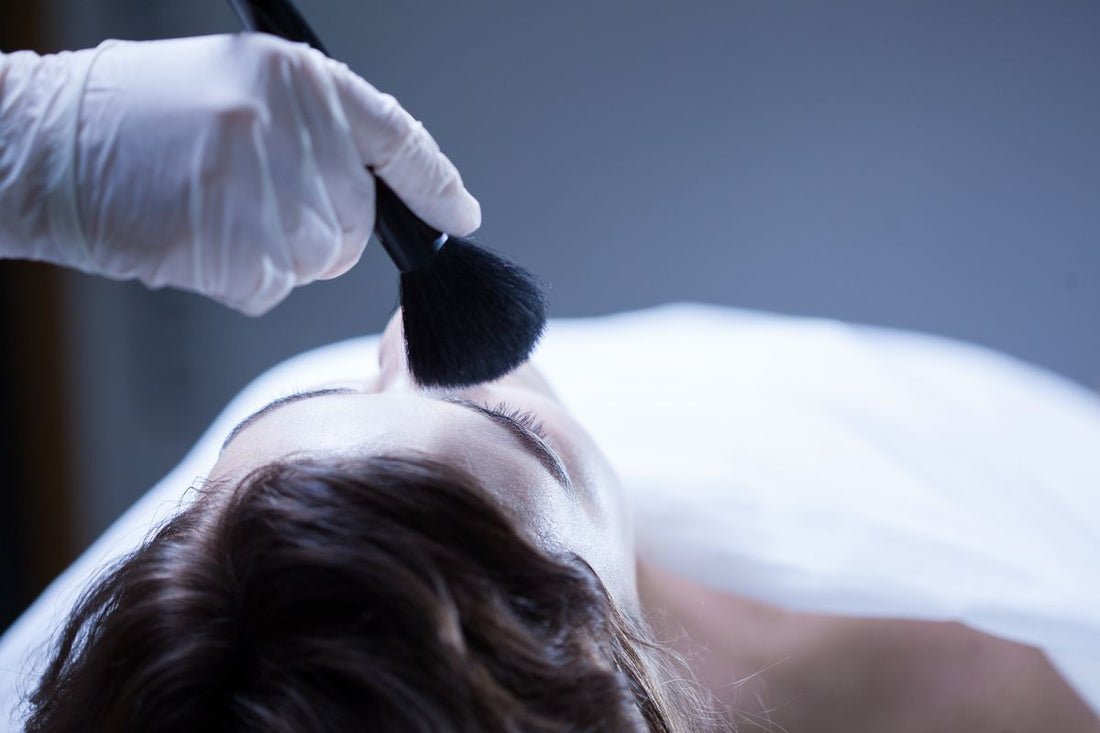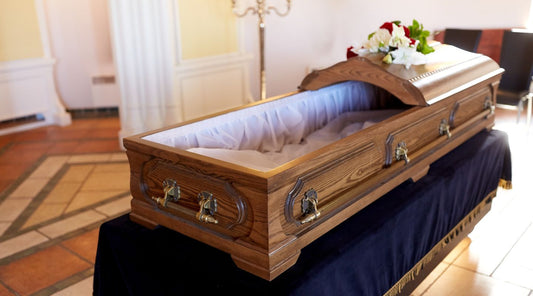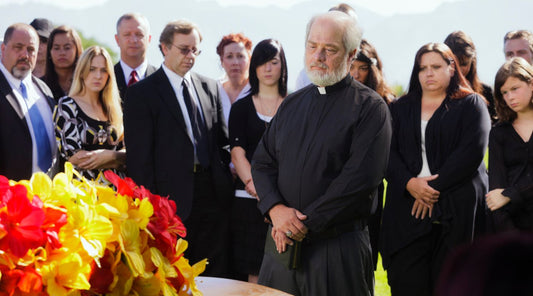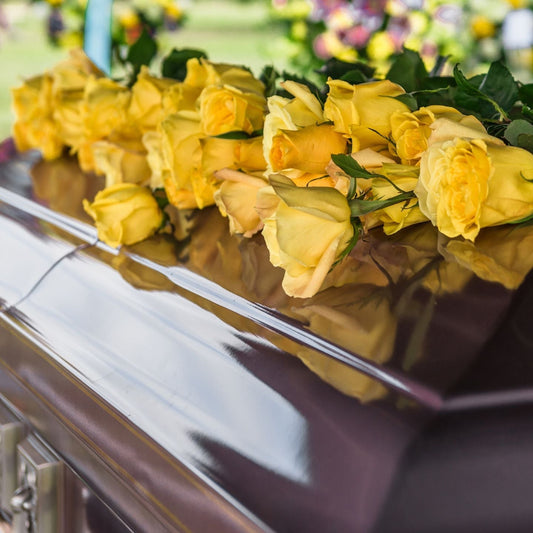
What is Embalming? Do You Need Embalming For a Funeral?
In short words, embalming means injecting a deceased body with chemicals that help preserve it. It's a popular choice for funerals — especially open-casket funerals — because it allows the body to retain a more lifelike appearance, allowing loved ones to say their farewells in person.
How Much Does it Cost to Embalm a Body for a Funeral?
This service typically costs several hundred dollars in the U.S. and a funeral parlor will usually offer it as a recommended extra service. However, it's worth considering whether you want an open-casket funeral for your loved one: if so, this tends to be the case where it's worth investing in this service.
How Does Embalming Work for Funerals in the U.S.?
Embalming for a funeral service in the U.S. usually involves removing the blood and other fluids from the body. These are replaced with chemicals that help preserve the body's outward appearance: formaldehyde is the main chemical in these solutions. The process is extremely delicate and will be carried out by an experienced embalmer who has undergone years of training.
Surface embalming means repairing external injuries to the body and taking steps to remedy any decay that has begun before the process begins. Especially for individuals who have died of external injuries, this is an important part of allowing the body to be presented to the family and loved ones.
What are the Benefits of Embalming?
Most people choose this option for funeral service because it helps preserve an image of the person they're saying farewell to. However, this is entirely a matter of personal preference. Some people find it upsetting to see a loved one “preserved” in this way and prefer to avoid the use of makeup. Furthermore, many funerals are conducted with a closed casket, in which case embalming is often unnecessary.

If a funeral service has to be postponed until later than you would wish, embalming can be a good option to prevent the body from decaying. The embalming is also required if you need to transfer the body of your loved one in the funeral casket for a long distance. While the practice doesn't prevent decay, it significantly slows it down.
History of Embalming
Embalming has existed for thousands of years. The first civilization to use the process was possibly the Chinchorro civilization of modern-day Peru and Chile. This tradition may stretch back as far as 8,000 years, and incredibly well-preserved remains have been discovered due to the unique climate of the Atacama Desert.

The Ancient Egyptians famously used certain techniques to preserve the bodies of the recently deceased (a process known as mummification). It was believed that this process gave the deceased better prospects in the afterlife. Thanks to this practice, remains of individuals buried thousands of years ago are still discovered in the magnificent tombs of Ancient Egypt.
It was also a common practice in ancient China, with the remains uncovered from the Han dynasty being among the best-preserved remains from that period (~200 B.C.E. — ~200 C. E.) in the world. The techniques and chemicals used in this mummification process remain unknown to this day.
How Common is Embalming in the United States
In the U.S., the process gained popularity during the Civil War. Soldiers fought a long way from home, but it was extremely important to many families that casualties were buried in the land that they grew up in. Embalming processes were the best way to ensure that the deceased soldier's body could return home in a recognizable state.
This technique became less common after the Civil War but rose in popularity again towards the end of the 19th Century. At this time, professional funeral parlors were beginning to appear in the U.S., and proper funerals were becoming more widely accessible for citizens.
Embalming provided more time for families to organize the funeral service. A process that had been useful in the Civil War for the transport of bodies now enabled the relatives and loved ones of the deceased to find a good time to assemble and pay their respects. It also enabled the deceased to be presented in open-casket funerals as the living would remember them and remains popular today for this reason.
How Long Does It Take to Embalm a Body?
The process takes several hours, depending on the amount of work required. The embalmer will also perform duties such as washing the body and relieving rigor mortis (which sets into the limbs after a person passes away). Closer to the funeral service, they will apply appropriate makeup to the body to preserve its dignity and allow anyone close to the deceased to say farewell to the person they remember.
Embalming and Religions
Many religions prohibit this practice. Most Christian churches, including the Catholic Church and most Protestant denominations, accept the practice but don't actively encourage it. Some Eastern Christian churches strongly discourage or outright ban the practice, so it's best to consult with your local church if you're from a religious background.
Islam and Judaism tend to avoid embalming, preferring to bury the body as quickly as possible with their designated rites for proper body and soul treatment.
Hindu and Buddhist faiths tend to use cremation in a funeral service, which usually makes embalming unnecessary. Whatever background you're from, if your loved one has chosen cremation as their preferred option, this process is probably not necessary.
Do Funeral Homes Required Embalming?
Funeral services will often recommend embalming as the best way to say farewell to a loved one. However, the choice is always up to you. Funerals are already expensive and emotionally taxing to organize, so unless you have a strong wish for attendees to say goodbye to the deceased with an open casket, you may not require this service.

You may find that your funeral service provider recommends this process if the body has to be transported across state lines or if the funeral home doesn't have enough space for proper refrigeration of the body. These circumstances mean that the body needs to be preserved to prevent potentially harmful decay. However, the latter circumstance is rare, and if you need a body to be transported across state lines, you should speak frankly with your funeral service provider about the best options available.
Is Embalming Bad for the Environment?
There have been some criticisms of embalming procedures due to the release of formaldehyde into the environment after the body is buried. This is a valid point, as formaldehyde is a harmful chemical. However, there are some eco-friendly options for embalming available, depending on your funeral service provider.
It's generally more eco-friendly to let a body pass naturally. However, if you think that embalming is the best way to say farewell to a loved one, it's worth exploring all the options available to you.
Conclusion
The embalming of the deceased for the burial or memorial service has been around for thousands of years and has evolved considerably. Everyone has their own way of saying their goodbyes, and we recommend that you take time before deciding whether you should embalm a body or not. If you're considering embalming, speak to your local funeral service provider to better understand how the procedure works.
Blog Author: Tim



